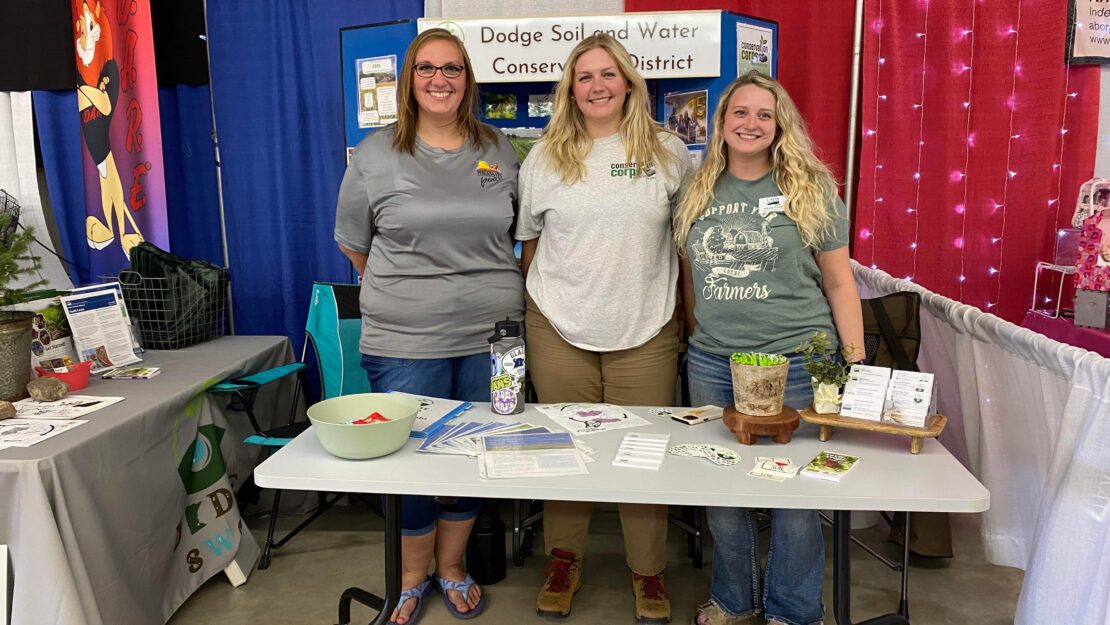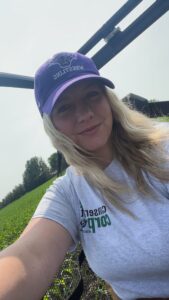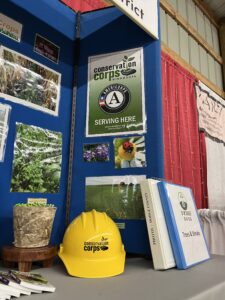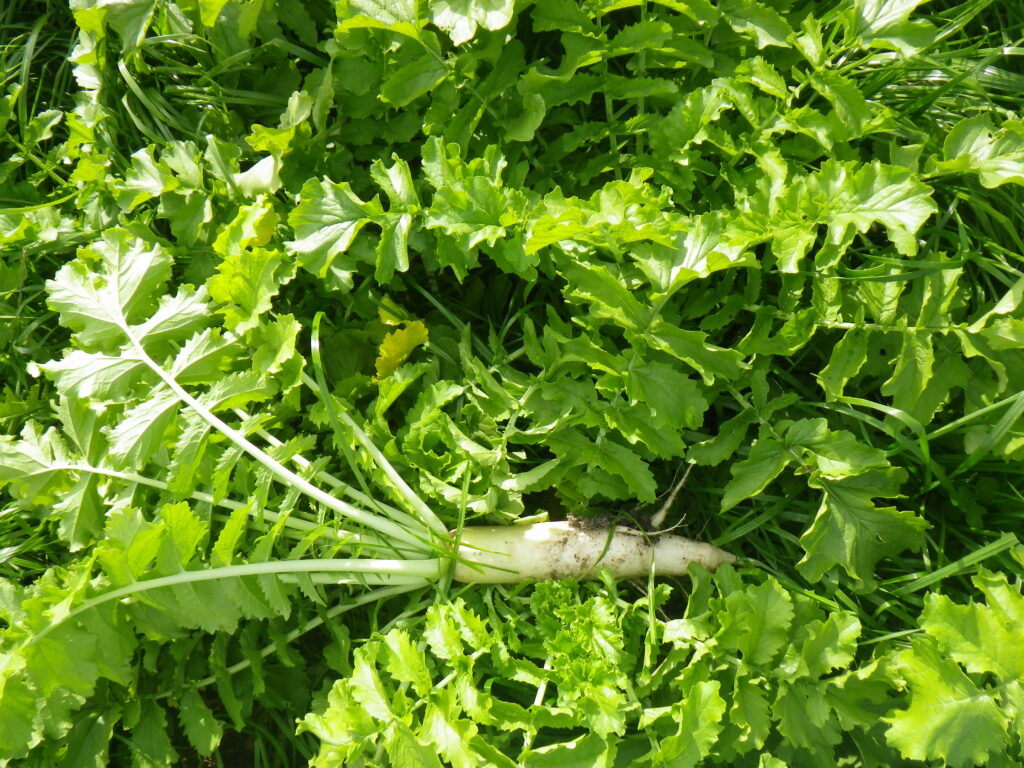Harvesting Knowledge and Growth

By Mia Makovsky, Clean Water Corpsmember / AmeriCorps Member placed with Dodge Soil Water and Conservation District

Spending my summer placed with the Dodge SWCD has been such a treat, despite the extreme initial learning curve. When I arrived in Dodge, one of the only counties in Minnesota to not have a stoplight, I learned that 86.1% of county land is used to cultivate crops. Having little experience with agriculture, I felt like a fish out of water.
This feeling was reassured on my second day when I went on a field visit to a farmer’s homestead. He was having issues with the hydraulics of the district’s no-till planting drill. The discussion we had might as well have been in a different language, because I understood almost nothing.
I left that conversation feeling discouraged that I may never understand agriculture terminology and machinery. But, one of the most important things I have learned about the farming community is if you’re willing to learn, they’re willing to teach you.

Now more than ever is it important for farmers join forces and share their knowledge. With new advancements in technology, a higher frequency of extreme weather events, and changes in the market occurring, open channels of communication create better informed farmers. Sharing new information and conclusions creates a ripple effect throughout the community. Every mindful decision and every small act of conservation contributes to a movement that goes beyond the boundaries of a single farm or field.
Dodge County has left an undeniable mark on my heart and mind. I hope to see this community flourish and play an important role in shaping a more sustainable world. Now that my term of service is over, I still don’t understand everything about the world of agriculture. But thanks to CCMI, I have the resources to continue my education so that maybe one day I will.
